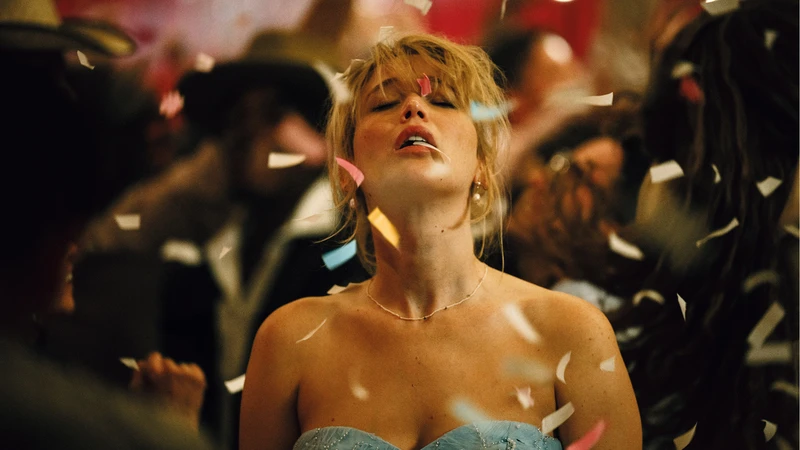Spike Lee's "Highest 2 Lowest:" Money, Morality, and New York City
- Eli Guillen

- Aug 22
- 4 min read
Under a brilliant rising sun over the New York City skyline, we are introduced to Spike Lee’s latest movie, Highest 2 Lowest. Serving as a reminder of how much respect he has for Akira Kurosawa’s original cinematic masterpiece, High and Low, alongside his love for his own city. He’s back to directing since his 2020 Netflix picture, Da 5 Bloods that was a look into the troubled past through the lens of the present. However, his latest film is uniquely modern and brings the likes of Denzel Washington and ASAP Rocky together to create an adaptation of a timeless Japanese classic.

Needless to say, this movie was very exciting in terms of both concept and delivery. Kurosawa’s 1963 film was a noir crime thriller that gave a harrowing insight into the social and economic troubles that he saw in Japan. With his masterful directing and careful attention to world-building, Kurosawa created a movie detailing Heaven and Hell within the confines of our society. The suspense of a criminal that could grow from an impoverished area, and the idea that a random person could kidnap a millionaire's son is still riveting to this day. As such, with the social commentary and filmic influence that the movie had established, it’s no wonder that Spike Lee, as a film lover, would be attracted to a potential modern-day adaptation. This time, including his perspective on what today's social/economic divide looks like.
So much credit and praise is owed to Denzel Washington’s performance as David, a music mogul who grew his record company from the ground up into a sprawling empire but still finds himself unhappy. He performs this innate sadness, guarded by a jaded, masculine facade. The film’s premise of his son being kidnapped forces him to confront his own morality, sense of justice, and the extent to which he would Do The Right Thing (pun intended). Washington extends his pain and comedic ease towards all of his co-stars. At times, his ability to be so in character feels like more of an intimidation tactic to his peers than what the scene should accomplish. One flaw of this film is that some actors play bits that feel like more archetypes than actual fleshed-out characters. Which, on the one hand, is funny, but on the other, if Washington can put so much emotion into the legitimate pain he feels as a father aching over the pains in his life, I’d rather see everyone else be written to match his clearly troubled character.

Bouncing back, Spike Lee uses the city itself as a great tool for movement and suspense equally, just as Kurosawa did. The action sequences are intensified through the quick camera movement, tight crowd shots, and fun chases that emphasize both the claustrophobic nature of the city but also the ticking clock of an ongoing hostage situation. I wish there was more focus within the Morris Heights and Claremont Village area in both a contrasting palette to the penthouse we stay in for a majority of the film, but also as more of a narrative connection to David and ASAP Rocky's Yung Felon. I think this was an excellent shift in the narrative structure of the original film that ultimately elevated its social commentary. But even still, Lee’s necessary direction of the locations he films at comes from such a unique and humorous pride that had the audience at the screening laughing and awing at. Spike makes it very clear what he thinks, i.e the Celtics Suck, the Knicks rule, he hates the Red Sox, and loves Yankee Stadium. Even the inclusion of a Puerto Rican Day Parade amid a very well-done train sequence brings Lee’s city into the forefront as another character in the movie.
Speaking of characters, ASAP Rocky’s character, Yung Felon is extremely well-written for the limited time he has. He’s very much a threat in all regards, especially as the mysterious villain for ⅔ of the movie. However, Alan Fox should get a lot more credit for the writing he built around the concept of what a High and Low movie should mean in an America of today. His character idolizes David to no end and clearly sees the road his life went down as one where he was destined to have a better future, just like David. His original attachment turns into resentment, then slight forgiveness with a tinge of jealousy. It's the result of the fascination that this movie has with the idea that “Not all money is good money”.

In a very wealth-oriented culture, the storyline of Highest 2 Lowest is very well developed to blend two people from contrasting sides of economic and social class. Both characters are tied to money and greed as a way of gaining "more" versus appreciating and developing what you already have, which is precisely Washington’s dilemma outside of the hostage situation. This journey of both personas going down a path where they’re forced to grapple with the importance of wealth beautifully adapts ideas from Kurosawa’s original ending, which is more open-ended. Should we think about our society's lower class as if they don’t exist?
Kurosawa’s High and Low was a mere exposure to that idea. However, Spike Lee’s Highest 2 Lowest takes a stance of uplifting marginalized voices in a determined and powerful way, without sacrificing their morality. It shows a clear insight to Spike Lee’s love of Black culture and cinema that ultimately makes this film a beautiful love letter to both.



